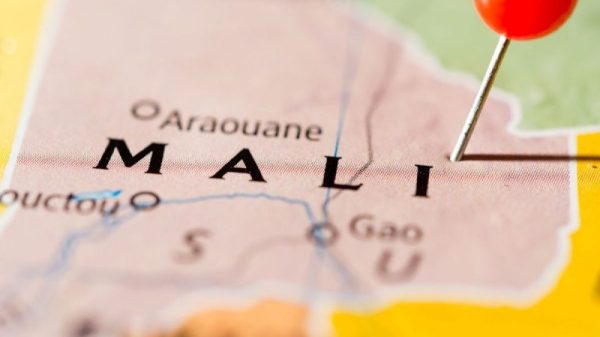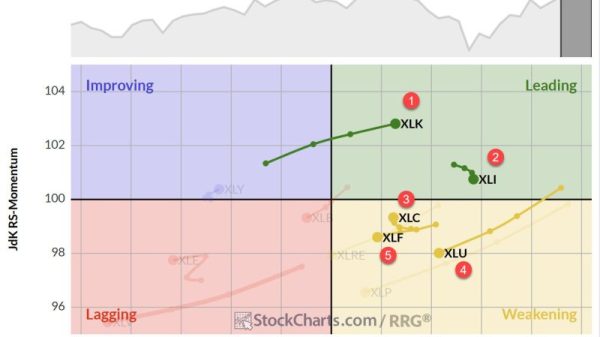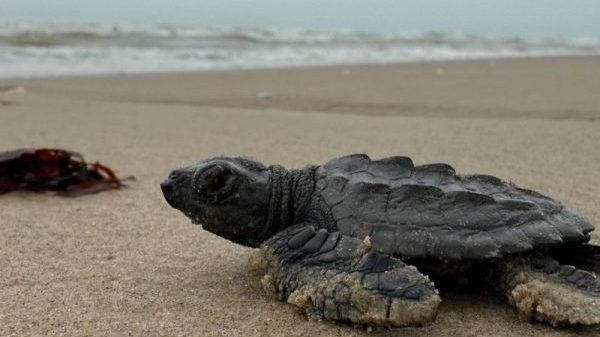Three-toed fossil footprints that date back more than 210 million years were pressed into soft mud by bipedal reptiles with feet like a bird’s, a new analysis of the tracks has revealed.
The footprints, found at several sites in southern Africa, were recently identified as the oldest birdlike tracks ever found, preceding the earliest known skeletal fossils of avians by about 60 million years.
“Given their age they were likely made by dinosaurs,” said Dr. Miengah Abrahams, a lecturer in geological sciences at the University of Cape Town in South Africa. Abrahams is lead author of the new study describing the tracks, published Tuesday in the journal PLOS One.
However, because the animals that made the tracks are unknown, their relationship to birds is unclear. The prints could represent a missing clue about avian evolution, or they could belong to reptiles that aren’t close to the avian lineage but independently evolved birdlike feet, the researchers reported.
Fossils without bones
The footprints were discovered in the mid-20th century and were assigned the scientific name Trisauropodiscus by French paleontologist Paul Ellenberger. The name is an ichnogenus, meaning that it describes a genus based on trace fossils, or fossilized impressions that an animal left behind, rather than fossils of its body.
There are thought to be seven ichnospecies linked to Trisauropodiscus tracks, and for decades paleontologists argued over the avian affinity of the group. Some called the tracks birdlike, but others weren’t so sure. Ellenberger may have muddied the waters by assigning many differently shaped tracks to the ichnogenus, “and not all of them are birdlike,” Abrahams said.
What’s more, the shape of a footprint can vary greatly, based on what type of material the animal stepped in. This can make it difficult to pinpoint physical features of extinct animals when fossilized tracks are the only clues that they left behind, said Dr. Julia Clarke, a professor of vertebrate paleontology at the University of Texas at Austin, who was not involved in the study.
At the time that the Trisauropodiscus tracks were stamped into mud, evolutionary adaptations were booming in archosaurs — the ancient reptile group that includes dinosaurs, pterosaurs and crocodilians — so it’s intriguing to find evidence of birdlike feet in an unknown member of this group, she added.
“The footprints are not a direct match for any fossil animals known from this region and time period. They could belong to other reptiles or cousins of dinosaurs that evolved birdlike feet,” Clarke said. “It’s adding to our understanding of morphological diversification in this really key time period in archosauria.”
Following footsteps
The researchers’ investigation began in 2016: The UCT team was “following in the footsteps of Paul Ellenberger, documenting his sites using modern ichnological standards,” Abrahams said.
During a trip to Maphutseng, a fossil locale in Lesotho, the team found a number of birdlike tracks from the Triassic Period. “It took us a minute to realise we were looking at Trisauropodiscus,” she said. “Our initial impression was that these tracks were indeed very birdlike and we knew we needed to investigate them further.” That entailed visits to fossil sites; analysis of archival photos, sketches and casts; and creating 3D digital models of the footprints.
The scientists reviewed 163 tracks and divided them into two categories, or morphotypes, based on their shapes. Tracks categorized as Morphotype I were tagged as non-avian. These prints were slightly longer than they were wide, with rounder, more robust toes that were narrowly splayed. “They also have a distinct ‘heel’” made by the pads of the third and fourth digits, Abrahams said.
By comparison, the Morphotype II tracks were smaller. They were wider than they were long, with slimmer toes. In their shape and in the wide splay of their digits, this second group of tracks closely resembled those of an avian from the Cretaceous Period (145 million to 66 million years ago): the wading bird Gruipeda, another ichnogenus known only from footprints. And overall, Morphotype II tracks closely resembled modern bird prints, the scientists reported.
The oldest fossil evidence for paravians — the dinosaur group that includes the earliest birds and their closest relatives — appears around the middle of the Jurassic Period (201.3 million to 145 million years ago); the Morphotype II Trisauropodiscus tracks, which date back at least 210 million years, hint that birdlike feet are even more ancient.
“Trisauropodiscus shows that the birdlike foot morphology is much older, a shared trait between modern birds and other Late Mesozoic archosaurs,” Abrahams said. “This investigation contributes to our collective ongoing understanding of the evolution of dinosaurs and birds.”
Mindy Weisberger is a science writer and media producer whose work has appeared in Live Science, Scientific American and How It Works magazine.







































